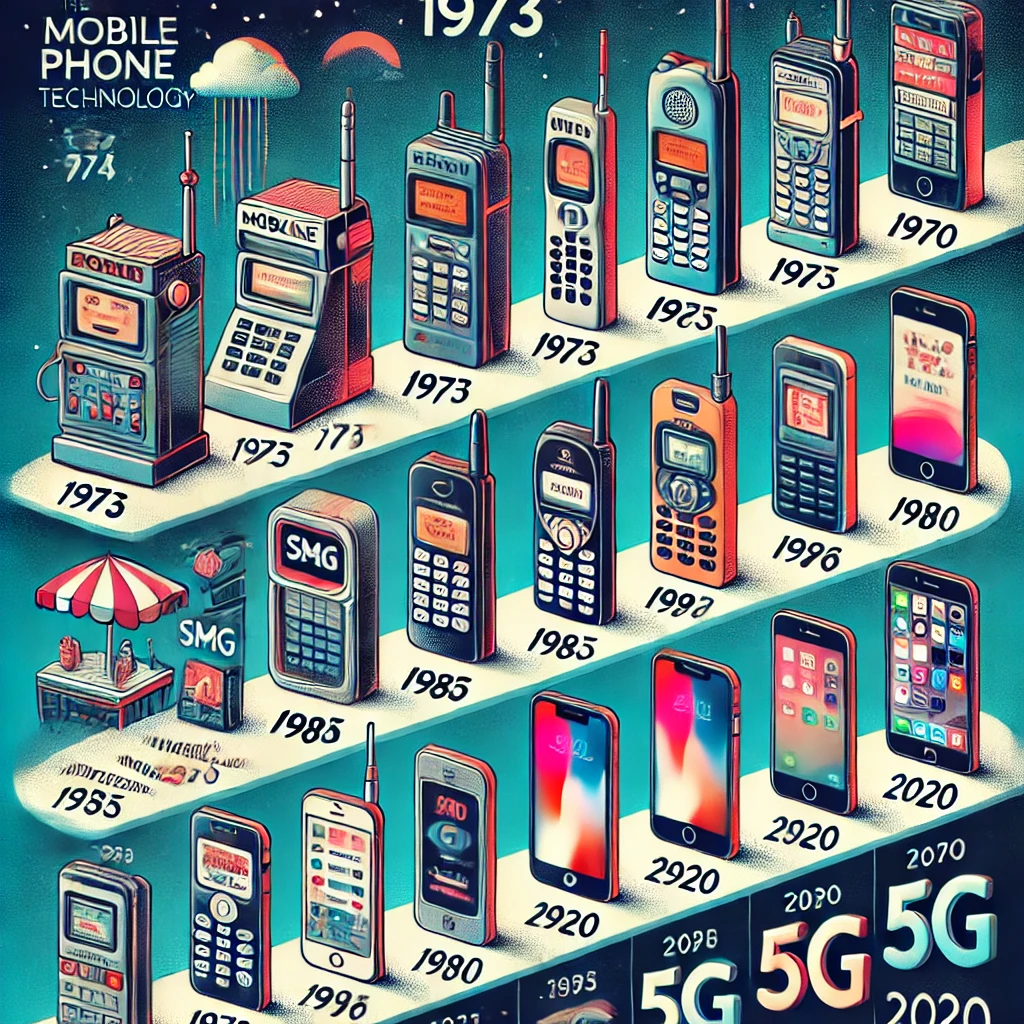
The Evolution of Mobile Phone Technology: A Timeline
Mobile phones have become an indispensable part of modern life, transforming communication, work, and entertainment. Their journey, from clunky bricks to sleek smartphones, is a fascinating testament to human ingenuity and technological progress. Here is a timeline highlighting the key developments in mobile phone technology, with a focus on the United Kingdom where relevant.
1970s: The Birth of Mobile Communication
- 1973: Motorola’s engineer, Martin Cooper, makes the first handheld mobile phone call on the Motorola DynaTAC 8000X. This device, weighing nearly 1.1 kg, marked the beginning of the mobile phone era.
- 1979: The first commercial cellular network launches in Japan, developed by Nippon Telegraph and Telephone (NTT).
1980s: The First Generation (1G) Phones
- 1983: Motorola releases the DynaTAC 8000X commercially. Priced at nearly $4,000, it offers just 30 minutes of talk time and takes 10 hours to recharge.
- 1985: The UK’s first mobile network, Vodafone, is launched, followed by Cellnet (now O2) in the same year. Vodafone’s first call was famously made by Sir Ernest Harrison to his son, which marked a milestone in UK telecommunications.
- 1989: Motorola introduces the MicroTAC, the first flip phone, setting a trend for compact and portable devices.
1990s: The Digital Revolution (2G)
- 1991: The first GSM (Global System for Mobile Communications) call is made in Finland. This digital standard allows for text messaging and improved voice quality.
- 1992: The first SMS (Short Message Service) is sent in the UK, reading “Merry Christmas.” This innovation, developed by British engineer Neil Papworth, became a defining feature of mobile communication.
- 1996: Nokia launches the 9000 Communicator, one of the first phones with email and fax capabilities.
- 1999: The Nokia 3210 debuts, featuring internal antennas and customisable ringtones, making it a cultural icon in the UK, particularly among teenagers.
2000s: The Rise of Smartphones (3G)
- 2000: Sharp unveils the first camera phone, the J-SH04, in Japan.
- 2003: The 3G network launches, enabling faster internet speeds and video calling. The UK played a key role in adopting 3G technology, with companies like Three (3) launching dedicated 3G networks early on.
- 2007: Apple releases the first iPhone, revolutionising mobile technology with its touchscreen, app ecosystem, and sleek design.
- 2008: Google introduces the Android operating system, providing an open-source alternative to Apple’s iOS. The UK embraced both platforms, fostering a competitive smartphone market.
2010s: The Age of 4G and Mobile Computing
- 2010: Samsung’s Galaxy S series debuts, becoming a strong competitor to the iPhone.
- 2011: Siri, Apple’s voice assistant, is introduced, marking the rise of AI-powered mobile features.
- 2013: 4G LTE networks roll out globally, offering broadband-like internet speeds on mobile devices. In the UK, EE became the first network to launch 4G services, reshaping mobile internet access.
- 2019: Foldable phones, such as the Samsung Galaxy Fold, make a comeback, blending innovation with nostalgia.
2020s: The 5G Revolution and Beyond
- 2020: 5G networks begin to expand worldwide, promising ultra-fast speeds, low latency, and new opportunities for IoT (Internet of Things) connectivity. In the UK, 5G adoption has been led by operators such as EE, Vodafone, and Three, with major cities like London, Manchester, and Birmingham seeing widespread rollout.
- 2022: Apple’s iPhone 14 and Samsung’s Galaxy S22 push the boundaries of mobile photography, processing power, and battery life.
- 2025 and Beyond: Mobile phones are expected to integrate more with wearable technology, AR/VR capabilities, and advanced AI. In the UK, there is growing interest in sustainable technology, with initiatives to recycle older phones and reduce electronic waste.
UK Perspectives and Examples
The UK has played a significant role in mobile phone history, from the first SMS to pioneering networks like Vodafone. Today, the country continues to lead in mobile technology adoption and innovation. Articles like The Guardian’s overview of UK mobile milestones and Ofcom’s reports on mobile usage provide deeper insights into how mobile technology has shaped British society. Furthermore, initiatives like the government’s “Digital Britain” strategy aim to ensure the UK remains at the forefront of connectivity and innovation.
Conclusion
The evolution of mobile phone technology has reshaped how we live, work, and connect. From the hefty Motorola DynaTAC to today’s pocket-sized supercomputers, each innovation has brought us closer to a fully interconnected world. As we move into the 5G era and beyond, the future of mobile technology holds endless possibilities, with the UK continuing to be a key player in this global journey.



